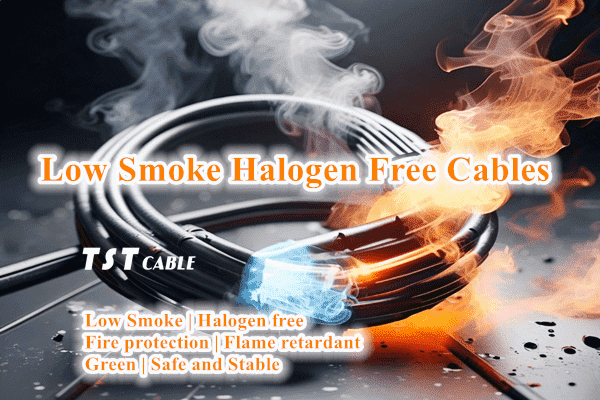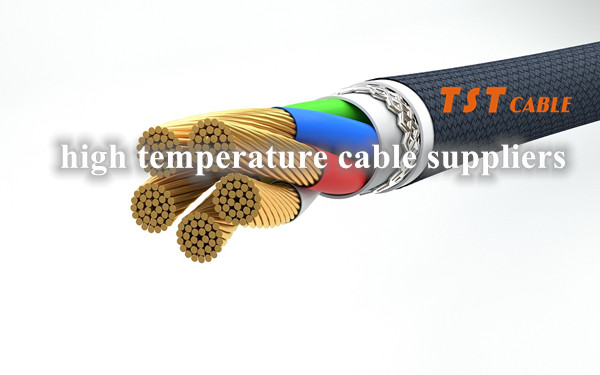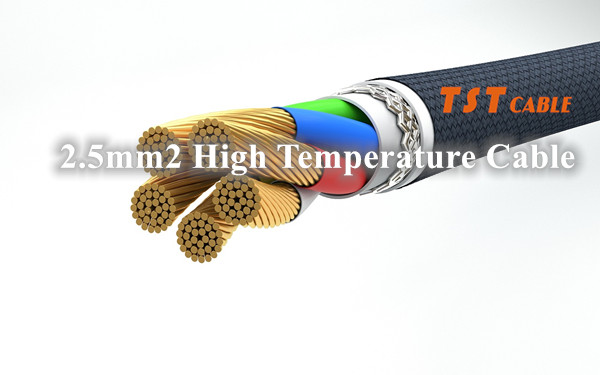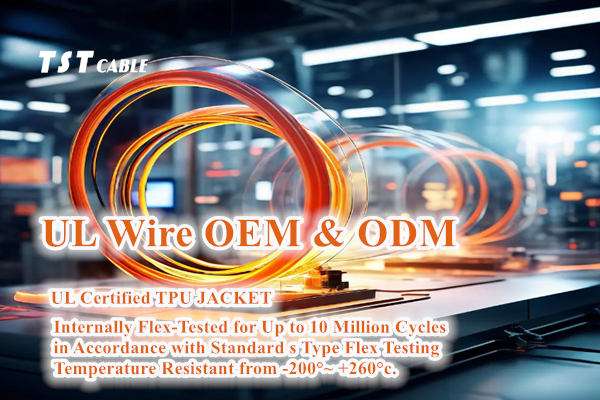
When building and maintaining indoor and outdoor cable solutions, we typically consider many physical factors such as cable length, broadband capacity and connection quality. However, one less obvious but equally important factor that is often overlooked is temperature. Fluctuations in temperature not only affect the physical state of the cable, but may also affect the efficiency of data transmission. In this article, TST CABLES will discuss how temperature can be an invisible enemy of cables and how to deal with this challenge.
Impact on cables in low temperature environments:
Reduced physical strength: In cold environments, cable materials, especially insulation materials such as polyvinyl chloride (PVC) and polyethylene (PE), become weaker and harden, resulting in cables being more susceptible to breakage during installation, maintenance, or when subjected to external forces.
Resistance changes: While low temperatures usually result in a slight reduction in the resistance of cables, which may slightly improve signal transmission efficiency, this is not always a positive effect. The increased risk of physical damage to the cable may offset this advantage.
Difficulty of Installation and Maintenance: Cold temperatures make cables harder and more difficult to bend and handle, increasing the difficulty of construction and the risk of potential damage.
Impact on cables in high temperature environments:
Increased resistance: The resistivity of cable conductors typically increases as temperatures rise, which can lead to an increase in heat as current passes through and a rise in energy consumption, as well as increased signal loss, reducing the quality and efficiency of data transmission.
Decrease in insulation performance: High temperatures can accelerate the aging process of insulation materials, reducing their service life. For example, when oil-impregnated paper-insulated cables are subjected to high temperatures, the oil may expand leading to structural deformation, which in severe cases can damage the cable.
Reduced current-carrying capacity: An increase in ambient temperature reduces the effective current-carrying capacity of a cable, as higher resistance means more heat is generated at the same current, and the current through the cable must be reduced for safe operation.
Physical deformation: Prolonged high temperatures may also cause the cable sheath to soften, expand or deform, affecting the mechanical stability and safety of the cable.
The combined effect of temperature changes on cables:
Thermal expansion and contraction: Periodic changes in temperature can lead to thermal expansion and contraction of cable materials, which may cause changes in physical geometry, increase the micro-bend inside the cable, thereby scattering the signal and reducing data transmission speed and bandwidth capacity.
Changes in dielectric properties: The dielectric constant and loss factor of cable insulation materials can change with temperature, affecting the speed and quality of signal propagation.
Chemical and corrosion problems: specific temperature conditions may also exacerbate the sensitivity of cable materials to the surrounding environment (e.g., chemicals, humidity), affecting their corrosion resistance.
Cable design and selection need to consider the temperature range of its operating environment, select the appropriate materials and structures to ensure that the extreme temperature conditions can still maintain good electrical performance and mechanical stability. In addition, taking necessary protective measures for specific application environments, such as the use of cold- or high-temperature-resistant materials, as well as enhanced heat dissipation and insulation measures, are all key to guaranteeing the long-term reliable operation of cables.
Temperature ratings for electrical materials
Conductor/Shielded Wire:
Silver plated copper = 200°C – 250°C
Nickel plated copper = 250°C (27% nickel 450°C – 550°C)
Stainless steel = 250°C
Extruded Insulation/Sheath:
Fluoropolymers (PFA, FEP, ECA, ETFE) – Fluoropolymers maintain performance over a range of temperatures PFA can be used from -200°C to 250°C, ECA can be used up to 300°C.
Polyester – Like fluoropolymers, polyesters are less flexible and are used in primary insulation and thin jackets. It maintains performance at temperatures of -100°C and below.
TPE – has excellent flexibility retention at low temperatures, TPE has been used successfully at temperatures as low as -100°C.
Silicone Rubber – Most silicone grades are suitable for temperatures from -75°C to 150°C, but select grades can extend to -90°C or up to 250°C.
Tape:
Polyimide – general purpose grade for 350°C
Polytetrafluoroethylene – 250°C
Mica Mat – +600°C
Braided fiberglass – E glass to 250°C, S glass to 450°C
Fillers/Textiles:
PTFE/PFA Monofilament – 260°C
Fiberglass – E Glass to 260°C, S Glass to 450°C
Aramid – 160°C
TST CABLES Temperature control and management strategies:
In order to cope with the effects of different ambient temperature variations on the performance of cables, TST CABLES adopts the following types of management and technical strategies:
Temperature Control Design: Temperature considerations should be taken into account early in the design of the cable system. For example, selecting cable materials with wider operating temperature range, such as high temperature resistant cross-linked polyethylene (XLPE) as insulation, or using special low-temperature toughness materials to enhance the performance of cables in low-temperature environments, the temperature operating range of TST CABLES products – 190 ℃ to + 1400 ℃, if you can not confirm what is the limiting temperature in your industry? If you can’t confirm the limit temperature of your industry and don’t know how to choose, welcome to contact TST CABLES senior engineers by email to get professional solutions.
Thermal management: For high-temperature environments, active cooling methods such as heat pipes, heat sinks or forced air cooling can be used to reduce the cable operating temperature and ensure that it operates within the safe range. At the same time, rational planning of cable layout, avoiding dense stacking of cables, to reduce the heat accumulation effect between each other.
Environmental adaptability considerations: in extreme climatic regions, such as polar or tropical regions, corresponding protective measures should be taken according to local climate characteristics. For example, in low-temperature environments, pre-buried cables with additional insulation; in high-temperature areas, you need to ensure that there is good ventilation and heat dissipation conditions.
Monitoring and maintenance: Install a temperature monitoring system to monitor the temperature changes in real-time when the cable is in operation, so that abnormal temperature rise can be detected in time and failures caused by overheating can be prevented. Regular maintenance and inspection of the cable system, including checking whether the insulation layer is aging and whether there is any damage to the sheath, etc., to ensure that the cable is in good condition.
Intelligent regulation system: In some advanced applications, an intelligent control system can be integrated to automatically adjust the cable load or activate the cooling system according to the ambient temperature, realizing dynamic temperature management and further improving the stability and efficiency of the system.
Material technology innovation: Continuously pay attention to the development of cable material science, using new high-performance materials, such as materials with higher temperature resistance level, better thermal stability or adaptive temperature regulation, in order to fundamentally improve the adaptability of cables in different temperature conditions, the temperature operating range of TST CABLES products -190 ℃ to +1400 ℃, covering more than 90% of high-temperature cable TST CABLES products cover more than 90% of high temperature cable applications.
TST CABLES can largely mitigate the adverse effects of temperature changes on cable performance through the combined application of the above strategies, ensuring the stable and efficient operation of power and communication systems. If you need high-temperature cables, please contact us by e-mail, and you can also apply for free samples.
Also available in:
English





